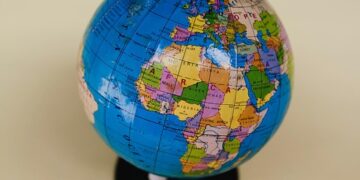Because today is the day the US economy begins to collapse, and it will happen sooner than anyone knows. That’s not to say an economic collapse happens out of nowhere. There are warning signs all around – and many economists may have been trying to let people know for a long time. Inflation has
Likely been high for a long time, bordering on hyperinflation. When money has less value, the price of goods and services go up too – and as salaries rarely rise with them, it becomes harder and harder to afford even basic goods. The economy may have
Been slowing down in growth as well, with more people on unemployment. The combination of the two factors leads to a condition called stagflation. This puts the government in an unfortunate bind – as the methods needed to lower inflation may lead to higher unemployment.
It’s a bad state of affairs – but the dam is about to burst. The stock market is the method most people use to gauge the health of the economy. If it’s doing well, people are likely to keep investing. But when there’s a sudden lack
Of investor confidence in the market, it can go downhill in a hurry – and it doesn’t take much. If a major player suddenly goes bankrupt, or bad economic or global news drops, people start selling their stocks. Tension over current political affairs – like the pending vote to raise
The United States debt ceiling – only makes things worse. When some people start selling, others follow suit – and the snowball effect starts Easy to get started, hard to stop. And that’s where the panic starts. In a matter of hours, billions of dollars are lost in the US economy. Major companies
See their stock value drop precipitously – some losing much of their net worth. And let’s not forget about the billionaires – many of them, like Jeff Bezos and Elon Musk, have their net worth heavily tied up in stock holdings. That means they lose and gain billions
Of dollars while sleeping – and today they might just see half their net worth disappear into thin air. It’s a disaster for everyone from the billionaires to the small investors who see their retirement savings go up in smoke. Many companies see their entire net worth disappear, and by the
Close of the trading day, countless people are out of work and facing an uncertain future. But it’s only going to get worse from here. Day Two: The US Government is in a panic. This is the worst day for stocks since 1929,
Even eclipsing the chaos caused by the Great Recession of 2008. They know something needs to be done – providing aid to keep the economic collapse from getting worse. That’s what happened in both 2008 and 2020. After the stock market collapse in 2008, a costly bailout bill was proposed,
Giving many of the businesses who were about to fold an infusion of cash. And in 2020, as the stock market collapse due to the Coronavirus pandemic, the government provided both aid to businesses who were shut down and direct payments to Americans who were out of
Work. That should work again, assuming the Republicans and Democrats can work together. No big deal, right? Not this time. A hurried bailout bill designed to stop the stock market collapse is voted down by a narrow margin, with some on the far right not wanting to spend taxpayer dollars and some on the far-left
Wanting a more robust bill. The result is a further loss of confidence in the US economy, complete with a stock market slide to match. It’s starting to look much less like a recession and more like a depression – and people around the world are paying attention.
The stock market has lost more than ten percent of its value in only two days, and everyone who relies on the US government for money is starting to get worried. That includes Americans – and those abroad. The US government runs a deficit – a massive one – and many of those dollars
Are owed abroad. The US national debt right now is a whopping thirty trillion dollars, and as the US economy continues its freefall, that’ll have global fallout. The US dollar declines in value quickly, and many of the creditors are worried they’ll never
Get their money back. So some might decide to call in their debts while they still can – to which the US might start saying “I’m good for it, man! I’ll pay you next week!” But it’s not just the big economic players who feel the damage created by the collapse.
As businesses shut down due to the stock crash and resulting bankruptcies, more people start to find themselves out of work. They worry where their next meal will be coming from, and what would happen if society breaks down as a whole? As night falls on the United States
For the second time in the midst of a massive economic collapse, many people look at the news and say “We’d better get out there tomorrow and pick up some supplies. Just in case.”. And that may just make things worse. Day Three:
The start of the trading day is at 9:30 AM, and most people heading onto the stock market floor look like they’re heading to an execution. No surprise, things look grim from the moment the trading starts – but elsewhere, there’s already chaos. Grocery stores around the country are seeing a surge in buyers, emptying
Shelves similar to the way they did in the early days of the pandemic. This sense of uncertainty has driven people to worry about shortages – and that means they’re going to create those shortages themselves by stripping the shelves! Soon, news footage starts coming out, and it’s not good.
Because when people are in a panic, they act out. The first footage shows two old women brawling over the last pack of eggs. Next, a video comes out of a man punching out a supermarket manager because she tells him they’ve run out of meat.
Shots of people looting and running out without paying are common, and robberies in the parking lot start cropping up as well. By the time evening falls on the United States, several major supermarkets and big box stores have been looted – which means they aren’t going to be open tomorrow.
But hey, at least they’re not on Wall Street. The overall losses have fallen to around 20% of the overall stock market in only three days. The panic has grown to an apocalyptic level, and people are starting to ask – should the stock market open tomorrow? Historically, major events have led to temporary halts
In trading. Assassinations of Presidents, outbreaks of major wars, collapses of major businesses have led to shutdowns, and the 9/11 terror attacks led to a six-day halt. Temporary halts prevented massive sell-offs during the Coronavirus shutdown, but it couldn’t stop the damage. Stock market halts can also be triggered at three thresholds – negative 7%,
13%, and 20%. And as the market crosses the third threshold, the powers that be say “Shut it down!” So the stock market won’t lose any more dollars tomorrow – but will that solve the problem? Day Four – People have started realizing that this is bad and it’s not going to get
Better any time soon. Much like last morning’s panicked grocery shopping, people are worried about another shortage today – money. Most people don’t keep much cash on hand, instead keeping all their money in the banks and relying on credit cards to do much of
Their shopping. But the fear makes people seek out something a little more reliable, so they head to the bank to do some larger-than-usual withdrawals. And once again, they’re far from the only ones. Footage comes out of lines snaking in and out of bank drive-throughs, clogging traffic.
Many people are withdrawing their entire life savings, and banks are running out of cash on hand forcing them to turn people away. As it becomes clear that this panic isn’t abating, many banks start to put withdrawal limits to avoid having to close down – and to make sure
Everyone maintains some access to their account. It could be worse – during the Great Depression, many banks went under entirely and many people lost their life savings as a result. Since then, banks have been insured by the government to prevent that from happening again – as
Long as the US Government is in semi-functioning order. And that’s not something that we should ever question. Or is it? With the Government failing to pass a relief bill, the President has been reduced to passing executive orders. He’s tried to unlock some emergency funding, but his powers are limited
And the bleeding doesn’t seem to be stopping. He’s ordered the leaders of both parties back to the negotiating table to hash out a bipartisan bill, but both have come to the table with their own demands and aren’t in a compromising mood. Making things worse, he spends most of
The day fielding angry calls from other world leaders. They’ve been watching the news and they’re concerned about what they’re seeing. Is the US economy on the verge of collapse? Right now, everything is in a holding pattern – but it’s about to get worse.
Day Five: The scariest thing about day five of the American economic collapse isn’t what’s happening – it’s what isn’t happening. The stock market is staying shut, and no one seems in a hurry to open it again. Many of the banks that dealt with the cash rush
Yesterday are staying closed too, with some making people arrange meetings to do withdrawals in person or putting strict limits on the amount that can be taken out. Many smaller banks are just keeping their doors closed and not allowing anyone to withdraw money. Grocery stores are reinstating pandemic-era policies, only letting a small
Number of people in at a time – and by the time people do get in, most of the shelves are empty. But they say there’s no scarier words than “I’m the government, and I’m here to help.” Congress wasn’t able to pass a relief bill yet, but they’re still negotiating. Debts are coming
Due, and countries outside the US are starting to wonder if the US has a handle on things. They don’t, but the President doesn’t want everyone else to know that! The first priority is an infusion of cash to start paying off the bills – and the best way to do that is by printing
A lot of money. An executive order has the Federal Reserve putting cash on the printer, and the US is able to take care of some pressing issues – but that has a nasty side effect, diluting the US dollar and contributing to already brutal inflation. We’re not quite at
Zimbabwe level yet, where they printed billion-dollar bills and people needed to show up to stores with wheelbarrows of cash, but economists are getting nervous. And a far bigger crisis might be just around the corner. The United States debt ceiling is the key to keeping the machine running, as the US
Usually runs a heavy debt – and when they don’t have the money on hand to pay for something, they just borrow more. The government sets a limit on the amount of debt the country can carry, and periodically they have to vote to raise it. That deadline is sneaking up fast,
And while the Congressmen are debating on what a relief bill should look like, this might be an even more pressing concern. Because if the debt ceiling doesn’t get raised, the US defaults on its debt – and that’s when things get really bad.
Day Six: Congress has been called back to vote on raising the debt ceiling, and the whole country – and world – is watching with bated breath. If they pass the bill, the US will be able to find some creditors to tide them over until the economic crisis passes. If it fails, default will
Come almost immediately on a segment of non-bond US debt, further undermining confidence in the economy and sending not just the US markets but the world markets into a panic as the world’s largest economy continues to convulse. With the stakes this high, surely a clean bill can be
Passed to give the debt ceiling a temporary boost or at least pass a temporary dispensation, right? Nothing is ever so easy in Congress. It’s clear that the tensions over the relief bill are spilling over from the minute the debate begins, with multiple Congressmen stepping up to raise objections to the
Bill or offer amendments that are only loosely related to the matter at hand. Arguments fill the halls of the House of Representatives, and making things worse, the controlling party only has a five-seat margin – with around ten hard-line members who often
Disagree with leadership. They need 218 votes to pass a raising of the debt limit – but the final bill has multiple poison-pill amendments that have angered both the base and the radicals, and when the vote roll is called, it falls short with only 210 votes.
And the entire world watches as the United States is about to default on a portion of its debt as of midnight. Around the world in stock markets that are still operating, people start selling off their shares of American companies. The American dollar continues to decline
Rapidly and the exchange rate becomes brutal for Americans looking to spend money outside of this country. And around the world, various powers start to sharpen their knives as the United States looks weaker than it’s been in over a hundred years. Could this
Be the end of the United States as a great power, or will it be another economic bump in the road? A whole lot of people are waiting to find out. Day Seven: As the economic crisis enters its first full week, the President is NOT
Happy. He’s already called up the leaders of both parties, reading them the riot act, and then watched with dismay as the clock rolled over and America officially was unable to pay its debts. He spent the rest of the early morning on the phone with allies,
Assuring them that this was a temporary problem and they would get their money in short order. Some, like most of Europe, were understanding – although rumblings in the streets of Europe were that doing business with America wasn’t a good proposition right now. But other countries were less understanding.
China, the single biggest US creditor, wasted no time, and reports started circling the globe of outposts of US companies being placed under Chinese control and US ships being detained at Chinese ports. The President had several tense phone calls with Chinese leadership,
But the Chinese were cagey and wouldn’t admit that there was an official policy of seizing US assets – although they wouldn’t deny it either. And in the throes of a massive economic crisis at home, the US wasn’t looking to add an international crisis to that. So the
President had little choice but trust China’s word and slink away quietly. And back on the home front, things were about to go from bad to worse. A week into the crisis, many companies were struggling with a massive cash flow problem.
Many owners had seen their company’s value drop like a rock or had problems getting the cash they needed to grow their business. Expansion plans were put on hold, planned loans were cancelled by timid lenders, and thousands of small and mid-sized businesses
Had seen their narrow profit margin disappear and were forced to close up shop when it was clear they would not be able to make this month’s rent. And that put tens of thousands of new people out of work and on the unemployment rolls – causing massive backlogs in the
Systems. Tensions are rising, and people don’t know where their next paycheck will come from. That’s a recipe for a tinderbox about to explode. Day Eight: One area hasn’t suffered much in the economic disaster – social media. As the panic
Grows, everyone with access to the internet is using social media to vent and make their own suggestions for what to do – and everyone seems to hate every other idea. Political tensions are higher than ever and everyone seems to agree on one thing – this is the government’s fault.
All it takes is one spark to make things boil over – and this comes when a video goes viral of an interaction at a supermarket. An old woman with a basket of groceries finds that her credit card has been declined, and is roughly handled by security when she begs them
To let her take the food anyway. That sparks a brawl in the store, with customers brawling with security and later police. The footage spreads around the world in a matter of hours. And the public is not happy. It starts as localized riots around the scene of the initial fighting,
But soon people in cities and suburbs around the country were taking to the streets. Some are ransacking supermarkets in a stepped-up version of the initial food wars. Others are taking their frustrations out on government buildings, looting stores, or brawling with the authorities in the streets. The police are out in force,
Trying to maintain order, but some find themselves outnumbered – and others aren’t interested in fighting with ordinary Americans in a panic over the economy. The public feels like the government isn’t doing anything – and that’s something that cuts across all political lines.
And one figure is taking more of the heat than anyone else. When a mob of protesters starts gathering around the White House, the Secret Service keeps an eye on it nervously. After all, protesting is legal – but when they start approaching the fence and tossing things over it, they spring into action.
The Secret Service quickly tries to disperse the crowd, but several agents are injured by tossed bottles. They fight back, arresting some protesters and injuring others, and the President is quickly ushered down to the White House bunker. The crowd is eventually dispersed,
But it’s clear something has been unleashed – and it’s not going away any time soon. And the rest of the world has noticed too. Day Nine: The footage of American cities and suburbs in flames has gone viral around the world,
And the President has given a shaky speech from the bunker calling for peace. To put it lightly it didn’t raise anyone’s confidence about the state of things. States have begun calling up the National Guard to restore order – but reports are coming in of Guardsmen refusing
Their orders. After all, they might be facing off against their own loved ones – and many of them are also looking at their bank accounts, terrified fo what is happening. Even more businesses chose to close down after last night – some suffering serious damage in the unrest,
And others not wanting to expose themselves to the riots if they kick off again. And some radical solutions are being proposed. What’s more important – the United States’ economic health, or the country staying a democracy? Powerful members of both parties have called for the President to declare a state of
Emergency and take extreme measures – including seizing the assets of some of the country’s most powerful billionaires. After all, those several hundred billion dollars might come in handy. Of course, they probably can’t agree on which billionaire should be first in line – probably
The one they disagree with the most. But one isn’t waiting to find out – word starts getting around that Elon Musk took a private plane to Canada overnight, where he still has citizenship. And he’s not the only one losing faith. Word starts spreading around the world of more and more American assets being
Seized by other countries. It continues in China – but other, less powerful countries are joining in. Even the US’ allies in the EU and the Anglosphere are sounding increasingly agitated about the situation, demanding answers from the President as the US Dollar keeps deflating and the political situation gets increasingly volatile. Around the country,
Those well-versed in financial matters decide to get what they can while the dollar still has value – with many trying to trade their cash in for commodities with a solid value, like gold. But will gold even be worth anything in the event of a complete economic collapse?
Day Ten: Most people have lost faith in the United States’ ability to pull itself out of this economic crisis any time soon, and it’s looking more like a full-on collapse than a recession or depression. The dollar has plunged to all-time lows around the world, thousands of
Businesses close by the day, and the public is in a panic. The President addresses the nation again, announcing emergency executive orders keeping the stock markets closed and instituting strict limits on cash withdrawals to prevent another bank run. However, he doesn’t announce any of
The far-reaching radical moves some wanted – although many say it’s just a matter of time. And around the world, a massive ripple effect begins to emerge. Even the US’ closest allies see a grim trend. Pending deals with American companies are called
Off, ongoing projects are put on hold, and branches of American businesses abroad start to shut down due to the contraction of the US economy. Many online markets stop taking the dollar altogether, because it’s too volatile to make a reliable currency as it declines by the
Day. The seizures of American businesses and ships in less-friendly countries continue – but the US is too preoccupied to care at the moment, and many American citizens abroad start to head home. Not that home is looking all that inviting.
As the public starts to prepare itself for a prolonged economic crash and possibly a total collapse, what will they need? The hoarding we saw in the first days wasn’t exactly productive, but long-time preppers have a plan for the worst-case scenario. They’re stocking
Up on food with a long shelf-life, water filters to ensure a supply of clean water, clothing for the winter, tools including axes that will allow them to cut wood for fire – and serve as a weapon in a pinch, first-aid kits, battery-operated radios and
Flashlights in case the power goes out. Most of these are worst-case scenario items for a total societal collapse rather than an economic collapse – but who knows where we’re headed? Is there a way out of an economic collapse? That heavily depends on what the government does. Some countries, like Venezuela and Zimbabwe,
Doubled down on faulty policies that led to hyperinflation and greater isolation from the world community. Others, like Argentina, were able to rebound from defaulting on their debt by negotiating with their creditors and restructuring their debt. It was a long, hard four-year depression, but they eventually started rebounding economically and came out of
The default. They just needed to work together and establish savvy policy. Good luck with that, Congress. Want to learn more about what happens when it all goes south? Check out “What Happens To A Country When It Goes Bankrupt?”, or watch “Great Depression,
What Life Was Actually Like” for a look at the last time the country hit rock bottom.


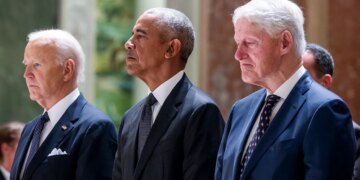
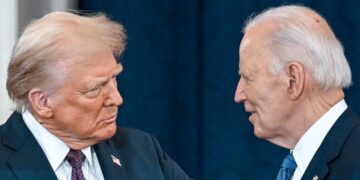





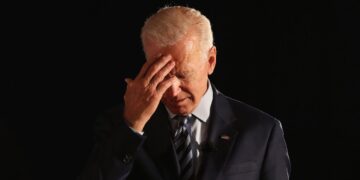
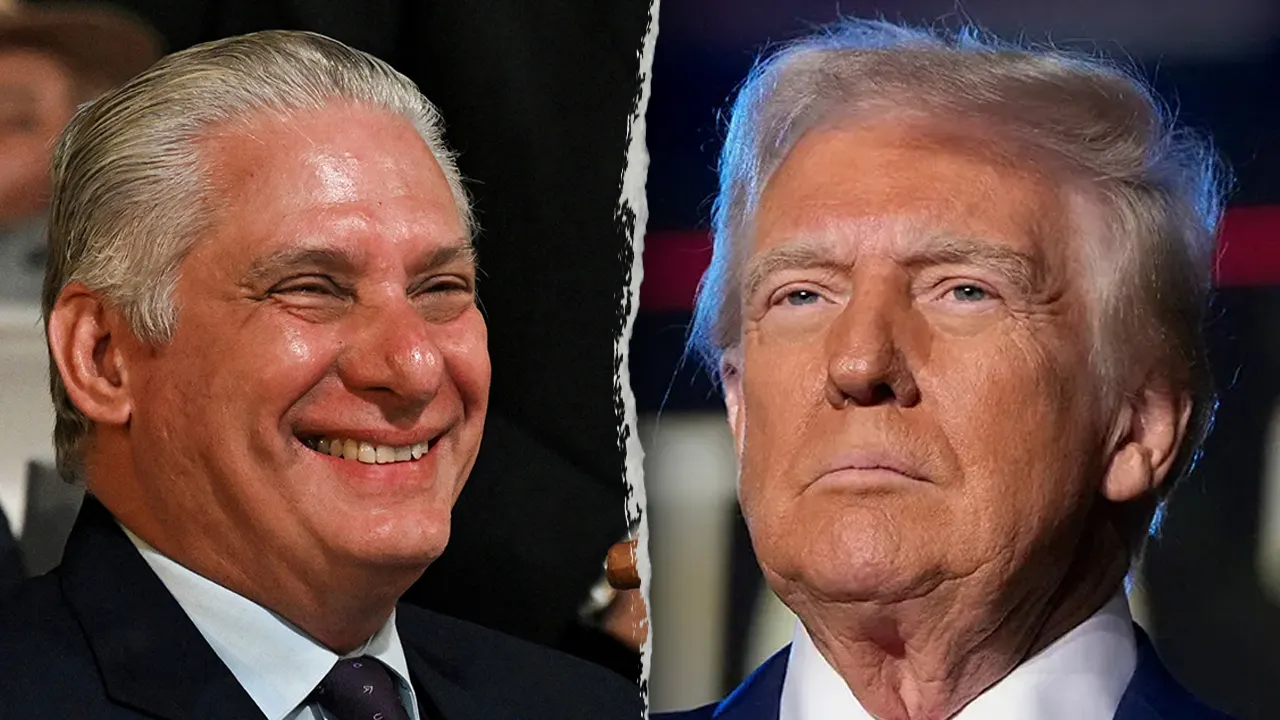






















 Reaction & Commentary
Reaction & Commentary
